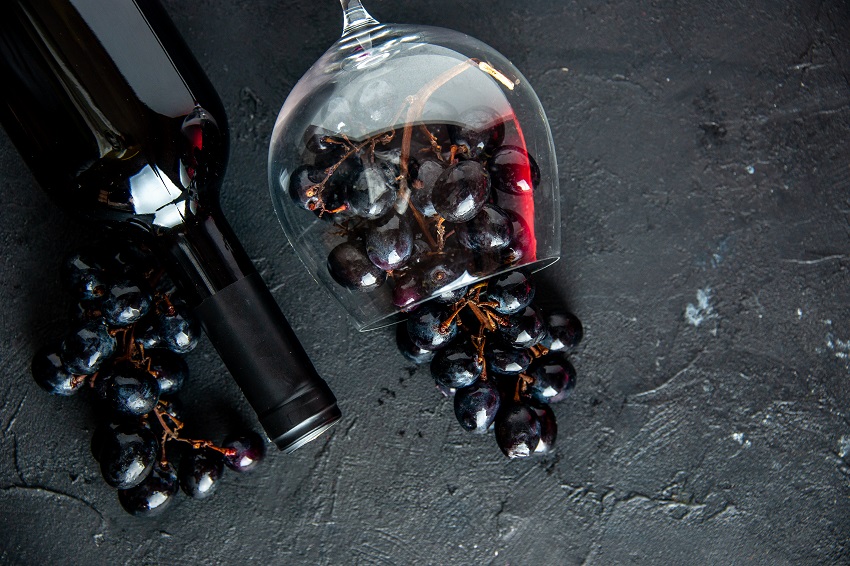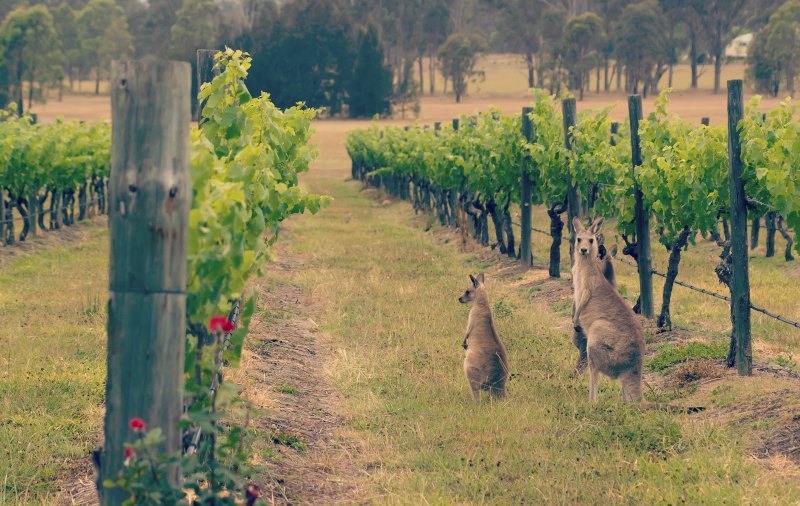The wine industry is home to a wide variety of grape types, each one bringing its own distinct qualities to the finished product. Each grape varietal has its own distinct profile, aroma, and level of acidity. Some have a more prominent role in specific regions while others are used for blending and adding complexity to the wine.
But among these, the flavourful and full-bodied Pinot Noir wine stands out as a particularly captivating variety. Often described as “finicky” and “temperamental,” this thin-skinned grape yields wines of remarkable elegance and complexity, unlike any other red.
What Is Pinot Noir?

Pinot Noir is a red wine grape variety that thrives in cooler climates. Originally from Burgundy in France, it has become a sought-after grape grown worldwide. Pinot Noir grapes are known for their thin skins, resulting in lighter-bodied wines with a translucent ruby hue compared to bolder reds.
Pinot Noir Around the World
The wine’s global reach has resulted in a fascinating tapestry of styles, each reflecting the unique fingerprint of its origin. Let’s explore some of the most celebrated Pinot Noir regions:
- Burgundy, France: Considered the pinnacle of Pinot Noir, Burgundy boasts legendary sub-regions like Côte-d’Or. Here, meticulous viticulture and a cool climate combine to produce intensely aromatic wines. Villages like Chambertin and Vosne-Romanée are revered for their ethereal perfume, silky texture, and remarkable aging potential. Expect notes of red cherry, raspberry, earth, and a touch of spice, evolving into complex layers of leather, truffle, and violets with age.
- Oregon, US: Oregon’s Willamette Valley has taken the world by storm with its vibrant and expressive Pinot Noirs. The cool climate and marine influence contribute to wines known for their bright acidity, silky tannins, and pronounced fruit flavours. Think aromas of red cherry, cranberry, and plum, complemented by notes of forest floor, rose petals, and a hint of smoke. Oregon Pinot Noirs are known for their elegance and drinkability, often enjoyed in their youth but also capable of aging gracefully.
- California, USA: California offers a diverse spectrum of Pinot Noir styles, reflecting the state’s varied climates. Cooler regions like the Sonoma Coast and Anderson Valley produce lighter-bodied wines with high acidity and notes of red fruit and earth, similar to Burgundy. Warmer areas like Central Coast and Santa Barbara County showcase bolder expressions, with riper fruit flavours like blackberry and plum, along with hints of spice and cocoa.
- New Zealand: New Zealand has established itself as a leader in cool-climate Pinot Noir. Regions like Central Otago and Marlborough are known for their vibrant acidity and pronounced flavours of red fruit and earth. Think aromas of raspberry, boysenberry, and plum, complemented by earthy notes of mushroom and forest floor. New Zealand varieties are characterised by a refreshing acidity and a focus on fruit-forward charm.
This is just a glimpse into the world of Pinot. Regions like Germany, Italy, and even Chile are producing exciting expressions of this versatile grape. The key takeaway is that climate and terroir play a significant role. Cooler regions tend to produce lighter-bodied wines with high acidity and flavours of red cherry, cranberry, and earth. Warmer regions give rise to fuller-bodied wines with riper fruit flavours like blackberry and plum.
Cultivating and Crafting Pinot Noir
The wine’s reputation for elegance extends beyond the glass. This thin-skinned grape is notoriously finicky in the vineyard, demanding meticulous attention from growers.
Susceptibility to frost and diseases like mildew and rot necessitates careful site selection, canopy management, and often, lower yields. Growers may employ techniques like leaf-thinning to promote airflow and sunlight penetration, reducing disease pressure and encouraging optimal grape ripening.
The timing of harvest is crucial. Pick grapes too early, and the resulting wine will lack concentration and flavour. Pick too late, and the delicate balance between acidity and fruit flavours can be disrupted. Experienced growers rely on a combination of sugar levels, acidity, and flavour profiles to determine the perfect harvest window.
The delicate nature of this wine continues in the winery. Gentle handling throughout the crushing and fermentation process is essential to preserve the grape’s fragile character. Winemakers often utilize techniques like whole cluster fermentation, which incorporates the stems into the fermentation process, adding subtle tannins and spice notes.
Oak aging plays a significant role in shaping the final profile of Pinot Noir. Winemakers must carefully choose the type and amount of oak used. New French oak barrels impart pronounced flavours of vanilla, toast, and spice, while older or neutral oak barrels allow the fruit character of Pinot Noir to shine through.
This delicate dance between viticulture and winemaking is what makes crafting exceptional Pinot Noir such a rewarding challenge. When done right, the results are wines that showcase the unique fingerprint of their origin, offering a captivating exploration of terroir and winemaking artistry.
Food Pairings for Pinot Noir

Pinot Noir’s versatility shines through when it comes to food pairings. Its delicate balance of fruit, acidity, and tannins allows it to complement a wide range of dishes. Here are some ideal pairings that unlock the full potential of this captivating wine:
- Roasted Chicken: Roasted chicken is a classic pairing for this beverage. The wine’s acidity cuts through the fattiness of the chicken, while the fruit flavours complement the savoury notes of the dish. Opt for Pinot Noirs with a touch of earthiness, like those from Burgundy or the Central Coast of California, to create a harmonious pairing.
- Duck Breast: Duck breast is a richer protein that can handle a bolder Pinot Noir. Look for wines from warmer regions like California’s Central Coast or New Zealand’s Marlborough, which boast riper fruit flavours and firmer tannins. These elements stand up to the duck’s richness and create a delightful contrast.
- Risotto with Porcini Mushrooms: The earthy notes of porcini mushrooms find a perfect match with this wine’s earthy character. Choose Pinot Noirs with pronounced aromas of forest floor or truffle, like those from Oregon or Burgundy. The wine’s acidity also cuts through the creaminess of the risotto, creating a well-balanced experience.
- Truffle Pasta: The luxurious aroma of truffles deserves an equally luxurious wine pairing. Pinot Noir’s earthy character and subtle hints of spice make it a perfect match. Choose a more mature Pinot Noir from Burgundy or Oregon, where the truffle’s complexity can be mirrored in the wine’s evolved flavours.
- Consider the weight, acidity, and fruit profile of the wine, and choose dishes that complement those elements. With a little exploration, you’ll be creating a symphony of flavours on your palate.













